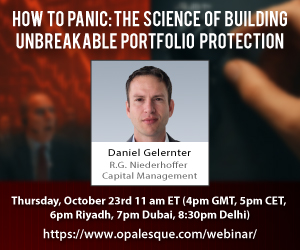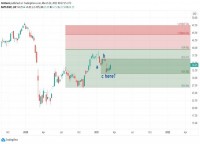|
|
The writer is an Islamic finance researcher who completed his MBA
(Investment Management) from Concordia University and is a CFA Level 3
candidate. He was recently awarded the Islamic Finance Qualification (IFQ)
designation.
An Islamic Reserve Currency
The rise of modern Islamic banking and finance in the 21st century has been one
of the greatest success stories in recent economic history. The industry remains
poised in a high-growth stage as banking practices are evolving into a core
group of standardized financial products compliant with the letter and spirit of
Sharia law. The initial challenge of reorienting conventional banking structures
towards interest-free financial systems has endured as Islamic banks are
hard-pressed in pricing financial products using benchmark interest rates to
remain competitive. Critics of Islamic banking charge that the Islamic financial
system has not reached the pristine level of best practices as ordained by
Sharia through the negation of uncertainty in financial contracts; current
financial practices remain tainted with the brush of riba am naseeyah (usury).
It is in this context that the introduction of an Islamic reserve currency
becomes paramount in removing the element of doubt in Islamic financial
contracts while providing a strong moral foundation for Islamic financial
systems to thrive across the global economic landscape.
The introduction of an Islamic reserve currency will bring some measure of
stability to the existing disorder in international financial markets whose
origins can be traced to the actions of a coterie of Wall Street bankers and
their reckless use of financial instruments in pursuit of bottom-line
profitability. Federal Reserve notes are undeniably in a permanent state of
decline as the economy of the United States is saddled with record budget and
trade deficits; external financial inflows will prove inadequate in sustaining
future US government spending programs particularly the badly needed stimulus
required to jumpstart its moribund economy. In this uncertain environment the
need for a genuine alternative reserve currency becomes ever more critical if
only as a vehicle of wealth preservation for sovereign nations.
The Islamic Development Bank is the ideal financial institution which can assume
the responsibility of providing such a reserve currency to member and non-member
states alike authenticating its halal credentials while working towards
cementing the ascendancy of Islamic financial systems. The trade off in
utilizing fiat currency as a principal medium of exchange remains a costly
option as its store of value consistently erodes after each business cycle.
Instead, the new reserve currency will improve upon the old Bretton Woods System
of fixed parities and will be backed by a free-float gold peg ensuring the
reserve currency retains intrinsic value. The current global financial crisis
has clear implications for the Muslim world and a desire for macro-economic
stability mandates a monetary policy that will protect regional economies in the
medium to long-term from the inevitable currency crisis.
Islamic Origins
The introduction of an Islamic currency can be traced to the reign of the second
Caliph Omar bin Khattab (644-655 AD) who established the following currency
standard which was upheld by succeeding Islamic governments namely:
The Islamic Dinar whose weight of gold was fixed at 4.3 grams
Islamic Dirham whose weight of silver was fixed at 3 grams.[i]
Commodity backed Islamic currencies were in use up until the collapse of the
Ottoman Empire and onset of World War 1 in 1914 when the Ottoman Empire chose to
abandon the gold standard.[ii] Clearly, a very strong tradition of metal based
currency exists in the Islamic world and can gain rapid acceptance provided the
sponsor is an established and recognized institution willing to act as a force
stabilizer of the Islamic financial system. The Kelantan state of Malaysia is
only a recent example of attempts by local authorities to bring greater
confidence in the monetary system and is understandable given the savage
speculative attacks the Malaysian Ringgit has suffered in the recent past.
Former Malaysian Prime Minister Mahathir Mohammed himself has been a champion of
Islamic monetary reform and is at the forefront in calling for a new reserve
system used to facilitate international trade. [iii]
Historical Perspective
Looked at through the ages, gold has played a pivotal role in the execution of
economic transactions as the principal medium of exchange; be it in the era of
Pax Romana or the medieval Ming Dynasty of China. However, the late 19th and
early 20th century witnessed an extensive use of gold reserves within the
prevailing international monetary system especially for the use of settling
international trade accounts. This fell into complete disfavor by 1933 when the
gold standard was abandoned by the United States under the aegis of President
Roosevelt.[iv] Its critics argued that gold was no longer seen as desirable,
citing its perceived inability to cope with the demands of global trade and
investment. In this backdrop the Bretton Woods system was born where fixed
exchange rates would be managed by the newly created International Monetary Fund
placing the US Dollar as the world's reserve currency; it remained fully
convertible to gold until 1971 underscoring the value of utilizing gold in
stabilizing exchange rates.
ASIDE: Bretton Woods Reloaded
In order to discuss the Islamic Dinar (and the broader topic of an Islamic
economy) we are required to take equal attention to the fiat currency
system of today as well as previous monetary systems. This calls for an
analysis of not just the Bretton Woods but what came before as well as
what came after (and the reasons surrounding these choices). Effectively
the current debate surrounding monetary policy is rather similar to the
one that has surrounded Islamic finance instruments, namely we have a
distinction between asset-backed and asset-based products. The gold
standard (i.e. pre-Bretton Woods) represented the notion of an
asset-backed currency, whereas the exchange rate systems that followed
(the fixed system of Bretton Woods and the and floating rate system of
today) represent an asset-based regime (the fiat or faith-based regime
banks on the credit worthiness of the issuer country).
Specifically, the gold standard as practiced in the 19th and 20th century
was based on the concept of having currencies being backed by a unit of
fixed weight in gold. In fact there have been different versions of this
system (namely the gold specie standard, the gold exchange standard, and
the gold bullion standard). The latter would have a relatively short
lifespan, in-between the end of WWI and the outset of the Great
Depression. Nonetheless, the gold standard reflected a need to manage
exchange rate risks and it was seen as an automatic regulator of trade
imbalances, although the effectiveness of this system increasingly came
into question. In particular with regards to short term shocks and its
inability of monetary policy to alleviate these pressures in a timely
fashion.
Overall, the gold standard proponents cite various benefits including:
long term price stability (i.e. inflation and specifically hyperinflation
are hampered); limiting governments from engaging in excessive seignorage
(supressing their ability to inflate prices through extensive issuance of
their paper currency); and the subsequent control of a government's
deficit (as countries can't inflate away the value of their foreign debt).
On the other hand, disadvantages to the gold standard are equally
numerous, mainly relating to the linkage between a gold standard and
deflation; the total amount of gold available (suggested to be
insufficient to back all current money in circulation); removing a key
tool of monetary policy to be used to alleviate a recession; eventual
dependence on gold production (i.e. inflationary pressures could ensue
when gold production increases or decreases) and in that sense short-term
price fluctuations due to the volatility of gold price in the open
markets.
The introduction of Bretton Woods aimed to replace the gold standard in
favour of a specified fixed exchange rate, US dollars to Gold ($35 per
ounce of gold), therefore each signatory country would be obligated to
maintain the exchange rate of its currency within a fixed value.
Nevertheless, there were stark differences as to how this system could be
implemented. Most notably, John Maynard Keynes proposed the creation of a
global currency - the Bancor - which would be backed by barter and its
value denominated in weight of gold. In other words this system called for
replacing the direct barter of "goods for goods" (i.e. currency for
currency) with a "goods for bancor for goods". Keynes argued that this
would lead to an equilibrium in international trade flows, in other words
he viewed imbalances as being caused when goods are not exchanged for
other goods but for money instead (i.e. any promissory note - form cash to
bills of exchange). The Bancor would have addressed these issues, although
as we know the US dollar was eventually chosen as the reserve currency.
This was due in part to geopolitical pressures emanating from the cold war
(and the fact that the USSR had access to significant gold deposits) as
well as the economic prominence that the US had built in the post-war era
(and the perceived strength of the US dollar).
The current monetary system is primed for an overhaul and the advent of a
so-called Bretton Woods II regime. All in all, many factors are coming
into play: the concept of Gold as a store of value has been extended to
other commodities (not just hard commodities); the prominence of a single
economic power is much less apparent (as well as a clear shift from US
current account surpluses to significant deficits); there is less
political polarization (i.e. the end of the Cold War) and instead a global
segmentation into economic blocs (with the emergence of the BRIC, Asian
and MiddleEastern economies, as well as the relatively-recent creation of
the European currency); and ultimately the economic
liberalization/globalization of the world economy. While many lessons have
been learned from both fixed-rate and floating-rate monetary regimes, we
can expect that the effectiveness of the current system will continue to
be challenged - in much the same way as Bretton-Woods challenged the gold
standard. |
The Islamic Dinar
The Islamic Dinar is presently the Islamic Development Bank's unit of account
and forms the basis for its authorized capital stock of 30 billion and
subscribed capital stock of 16 billion.[v] One Islamic Dinar is equivalent to
one special drawing right (SDR) of the International Monetary Fund.[vi] This
special drawing right based on IMF guidelines is further weighted in the
following manner to derive its value:
|
|
|
|
|
YTD 2010 |
YTD 2010 |
|
Symbol |
Currency |
Share |
Value |
Exchange Rate |
USD Equivalent |
|
$ |
US Dollar |
44% |
$ 0.63 |
1.00 |
0.63 |
|
€ |
Euro |
34% |
€ 0.41 |
1.32 |
0.45 |
|
¥ |
Japanese Yen |
11% |
¥ 18.40 |
0.01 |
0.20 |
|
£ |
British Pound |
11% |
£ 0.09 |
1.53 |
0.14 |
|
|
|
|
|
SDR1=USD |
1.42 |
Note: Exchange rates based on average yearly rates.
If instead the Islamic Dinar was pegged and fully convertible to gold based on
the established Islamic precept of 4.3 grams per dinar then its hypothetical
make-up would be quite different:
|
|
Price of 1 SDR in USD |
Price of 1 Islamic Dina |
|
2006 |
1.47 |
83.49 |
|
2007 |
1.53 |
96.14 |
|
2008 |
1.58 |
120.50 |
|
2009 |
1.54 |
134.50 |
|
YTD 2010 |
1.42 |
161.13 |
Note: Gold price based on London PM Fix per troy ounce convertible to grams/
Source: World Gold Council
Gold prices have clearly shown an upward trend and remain grossly undervalued
when inflation is factored in and prices are evaluated in real terms. The
long-term preservation of value particularly of a reserve currency such as the
Islamic Dinar can only be maintained if a gold standard is adopted. The fact
that the Bretton Woods system collapsed can be traced towards the US
government's spending programs (Lyndon Johnson's "Great Society") and the
Vietnam War. In fact one can draw a reasonable correlation between the
abandonment of sound monetary policy and the rise of wars where governments
recklessly print fiat currencies to pay for bloated defence budgets with costs
being passed on to the citizenry in the form of higher taxes and price
inflation. Frankly, this is destructive and quite toxic for growth to the most
productive sectors of the economy.
References
[i]
History of Islamic Dinar and Dirham, September 6, 2010
[ii]
Turkey Travel Guide, September 7, 2010
[iii] DAWN,
Malaysian State Launches Islamic Currency, September 7, 2010
[iv] Lords of Finance, Liaquat Ahmed, 2009, pp. 461
[v]
Islamic Development Bank, September 8, 2010
[vi]
Islamic Development Bank, September 8, 2010
Your feedback and comments are very important to us, please feel free to contact
the author via email.
|





 RSS
RSS










